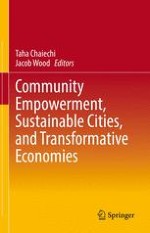2022 | OriginalPaper | Buchkapitel
Sustainable and Resilient Community in the Times of Crisis: The Greater Sydney Case
verfasst von : Khandakar Farid Uddin, Awais Piracha
Erschienen in: Community Empowerment, Sustainable Cities, and Transformative Economies
Verlag: Springer Nature Singapore
Aktivieren Sie unsere intelligente Suche, um passende Fachinhalte oder Patente zu finden.
Wählen Sie Textabschnitte aus um mit Künstlicher Intelligenz passenden Patente zu finden. powered by
Markieren Sie Textabschnitte, um KI-gestützt weitere passende Inhalte zu finden. powered by
